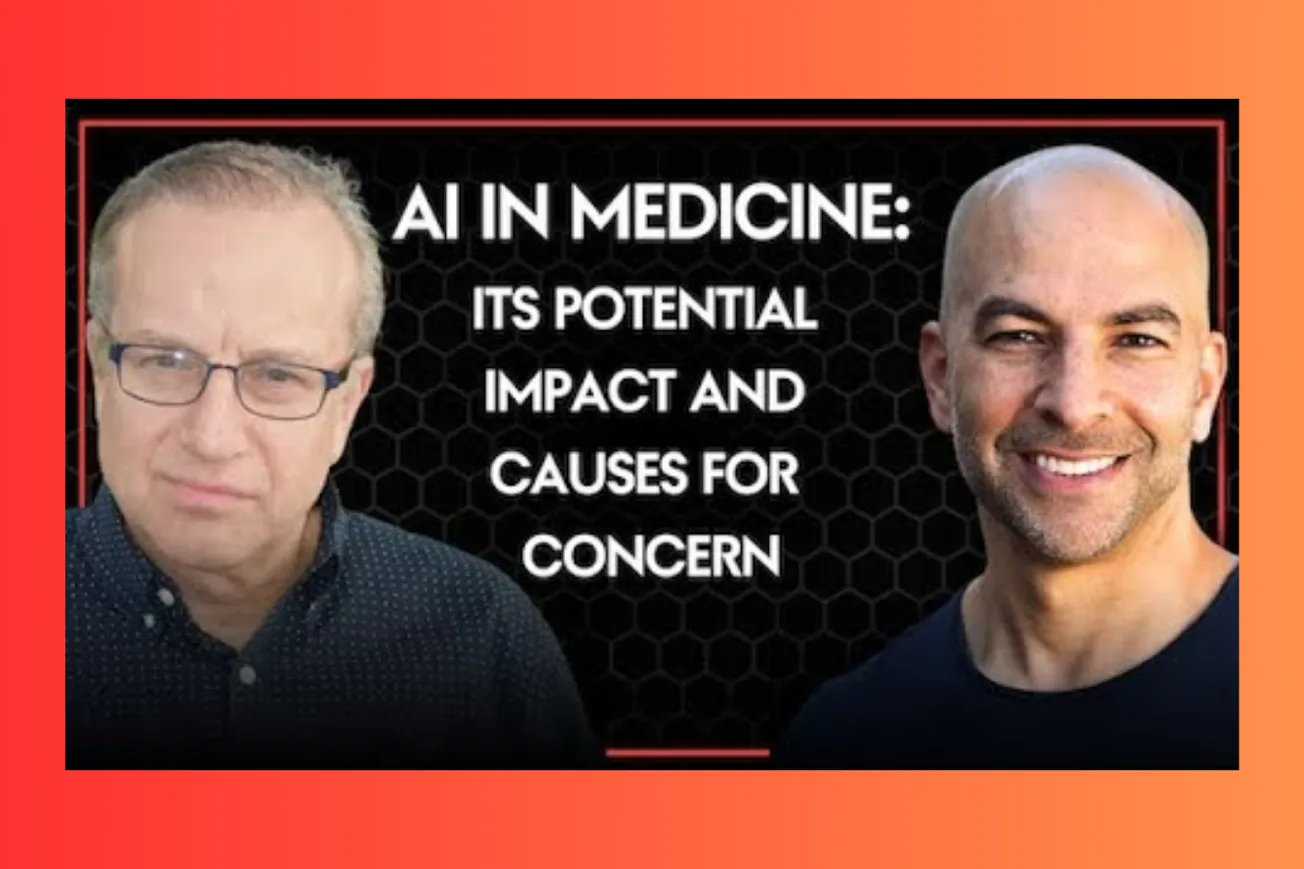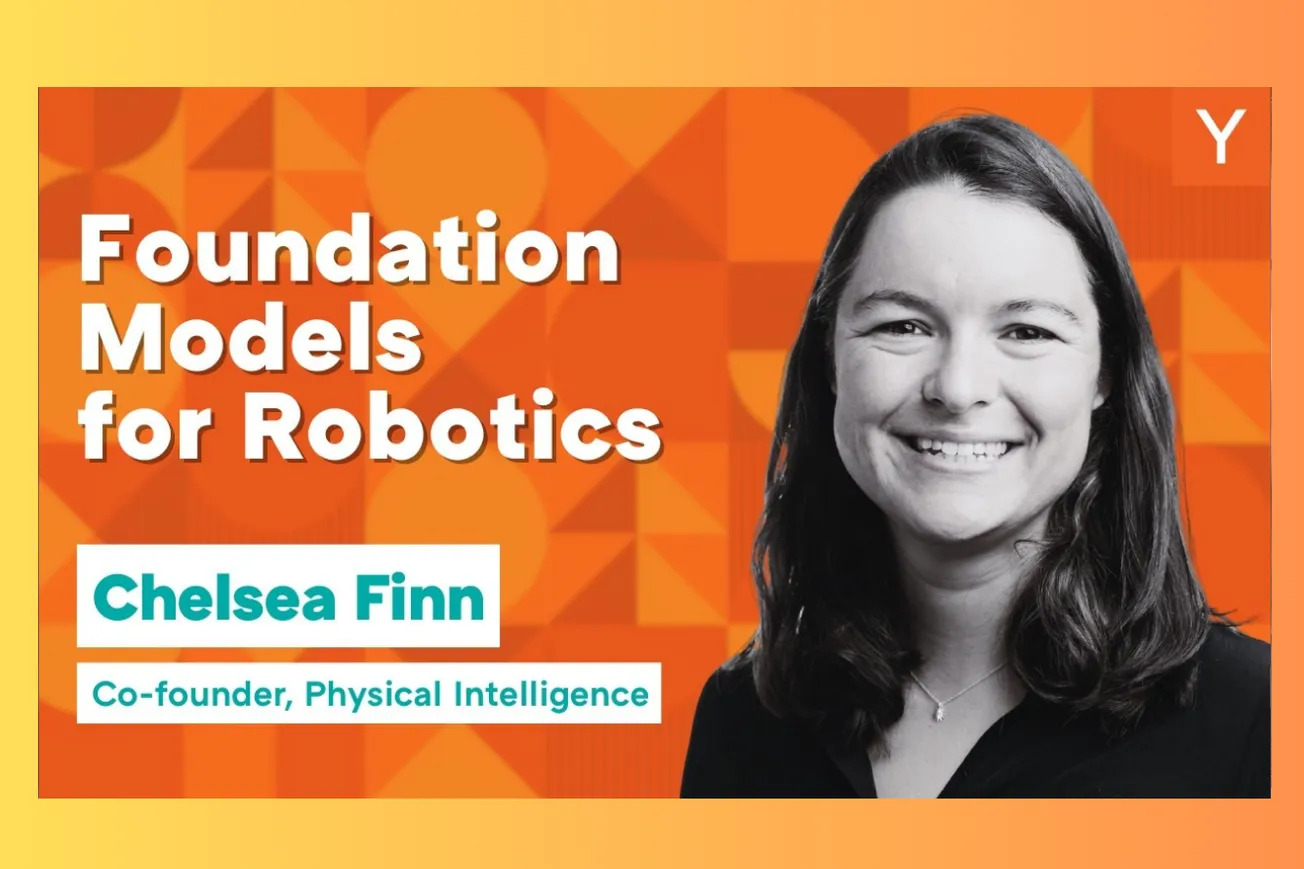Table of Contents
A deep dive into how artificial intelligence is transforming healthcare delivery, from diagnostic accuracy to surgical precision, with insights from leading medical AI researcher Dr. Zach Kohane.
Key Takeaways
- AI can already match expert-level performance in medical imaging, pathology, and dermatology diagnostics
- Current technology could raise the bottom 50% of doctors to top 50% performance levels without further breakthroughs
- Primary care faces a critical shortage with 50,000 missing doctors predicted by 2035, creating urgent need for AI augmentation
- Predictive AI models using retinal imaging can determine age, gender, hypertension status, and longevity estimates
- Robotic surgery controlled entirely by AI represents a realistic 10-year possibility according to leading researchers
- Patient-controlled health data through smartphones enables direct AI consultation, bypassing traditional healthcare bottlenecks
- Mental health applications show promise, with some patients preferring non-judgmental AI therapists over human practitioners
- Integration challenges include physician resistance, regulatory barriers, and hospital systems protecting existing business models
- Large language models like GPT-4 demonstrate remarkable diagnostic capabilities when given comprehensive patient histories
The Three Revolutions That Enabled Modern Medical AI
The current AI renaissance in medicine didn't emerge from nowhere. Dr. Zach Kohane, Chair of Biomedical Informatics at Harvard Medical School, traces three fundamental breakthroughs that transformed artificial intelligence from 1980s expert systems into today's sophisticated diagnostic tools.
- Massive data availability revolutionized training capabilities. The transition from paper medical records to electronic health records created unprecedented datasets. PubMed's digitization of medical literature, combined with the Obama administration's HITECH Act mandating electronic health records, generated the textual foundation needed for AI training. ImageNet's millions of annotated images provided the visual data necessary for medical imaging applications.
- Multi-layer neural networks overcame fundamental limitations of early AI systems. While 1950s perceptrons could only handle simple mathematical functions, deep neural networks with multiple processing layers enabled complex pattern recognition. These architectures proved capable of the sophisticated reasoning required for medical diagnosis, moving beyond the brittle rule-based systems of the 1980s.
- Graphics processing units (GPUs) provided the computational power for practical implementation. Originally developed to render video game graphics at 60 frames per second, GPUs contain thousands of parallel processors perfect for the linear algebra calculations required by neural networks. The gaming industry's demand for high-resolution graphics inadvertently created the hardware infrastructure that made medical AI feasible.
- Transfer learning accelerated medical applications beyond expectations. Neural networks trained on general image recognition tasks like cats and dogs proved remarkably effective when fine-tuned for medical imaging. A 2018 Google study demonstrated expert-level diabetic retinopathy detection using this approach, with computer scientists requiring minimal medical expertise beyond image labeling.
- The transformer architecture enabled multimodal analysis combining text and images. The 2017 "Attention is All You Need" paper introduced transformers, which understand word positioning and context in unprecedented ways. This breakthrough allows AI systems to integrate patient histories, lab results, and imaging studies—the comprehensive analysis that defines expert medical reasoning.
- Scale effects produced emergent capabilities that surprised even AI researchers. As language models grew from millions to trillions of parameters, they developed reasoning abilities that weren't explicitly programmed. GPT-4's ability to work through complex diagnostic scenarios mirrors the clinical reasoning process that medical students spend years developing.
Current AI systems can process information from multiple sources simultaneously—patient symptoms, previous medical history, laboratory values, and imaging studies—to generate diagnostic recommendations that rival expert physicians. This multimodal capability represents the crucial difference between narrow AI applications and the broad diagnostic reasoning that defines medical expertise.
Current AI Capabilities: Already Matching Medical Experts
Medical AI has achieved expert-level performance across multiple specialties that rely heavily on pattern recognition and image interpretation. The technology exists today to significantly improve diagnostic accuracy and reduce medical errors.
- Radiology applications demonstrate superhuman consistency in image interpretation. AI systems can now read chest X-rays, mammograms, and CT scans with accuracy matching experienced radiologists. Unlike human physicians, these systems never experience fatigue, distraction, or mood variations that affect diagnostic accuracy. Many hospitals already send imaging studies to remote radiologists overnight; AI can perform the same function with consistent quality and immediate availability.
- Pathology diagnosis benefits from AI's ability to detect subtle tissue patterns invisible to human observation. When examining tissue samples under microscopes, AI systems can identify cellular characteristics and patterns that correlate with specific diseases. The technology processes thousands of similar cases to identify diagnostic features that might escape even experienced pathologists, particularly in rare conditions where human experts have limited exposure.
- Dermatology applications enable accurate skin cancer detection using smartphone cameras. AI systems trained on millions of skin lesion images can distinguish between benign moles and melanoma with accuracy exceeding many dermatologists. This capability could revolutionize skin cancer screening, particularly in underserved areas where specialist access remains limited.
- Echocardiogram interpretation showcases AI's ability to process complex, multi-dimensional data. A recent UCLA study trained AI models on one million echocardiograms paired with radiologist reports. These three-dimensional, time-dependent videos require sophisticated analysis of cardiac function, blood flow patterns, and structural abnormalities—yet AI systems now interpret them with expert-level accuracy.
- Electrocardiogram analysis represents one of medicine's earliest successful AI implementations. ECG interpretation algorithms have functioned effectively for decades, providing automated analysis of heart rhythm abnormalities. Modern AI systems extend this capability to detect subtle patterns predictive of future cardiac events, often identifying risks that human physicians might miss.
- Ophthalmology benefits from AI's pattern recognition in retinal imaging. Beyond diabetic retinopathy detection, AI analysis of retinal photographs can determine patient age, gender, blood pressure status, and even provide longevity estimates. The retina offers a unique window into systemic health, with AI capable of detecting patterns invisible to human observation.
The crucial limitation isn't technological capability but integration into existing healthcare workflows. Current AI systems require human oversight and validation, but their diagnostic accuracy often exceeds that of newly trained physicians and can augment experienced doctors' decision-making processes.
Addressing the Healthcare Workforce Crisis Through AI Augmentation
The United States faces an unprecedented shortage of healthcare providers, particularly in primary care and certain specialties. AI augmentation offers a realistic solution to bridge this gap while maintaining or improving care quality.
- Primary care shortage reaches crisis levels with major hospitals refusing new patients. Massachusetts General Hospital and Brigham and Women's Hospital have officially stopped accepting primary care patients due to physician shortages. The American Association of Medical Colleges projects a deficit of 50,000 primary care physicians by 2035, with the problem already impacting patient access across the country.
- Medical specialty gaps affect the most vulnerable patient populations. Half of pediatric endocrinology fellowship positions remain unfilled nationally, leaving children with diabetes and growth disorders without specialized care. Pediatric developmental disorders, including autism, face similar physician shortages despite increasing diagnosis rates and demand for services.
- Nurse practitioners and physician assistants represent the solution when properly augmented with AI. These healthcare professionals train for two years instead of the four years of medical school plus residency required for physicians. When equipped with AI diagnostic tools, they can provide care quality approaching that of experienced physicians while remaining more accessible and affordable for patients.
- Current technology could elevate the bottom 50% of physicians to top 50% performance levels. As Kohane notes with his admittedly "bad joke": "what do you call the medical student who graduates at the bottom of this class? A doctor." AI augmentation could ensure consistently high-quality care regardless of individual physician variation in knowledge or experience.
- Concierge medicine services demonstrate the economic viability of AI-augmented care. Services like One Medical, acquired by Amazon, employ nurse practitioners supported by digital tools and telemedicine capabilities. Adding AI diagnostic support to these models could enable comprehensive primary care delivery at scale while maintaining personalized attention.
- Electronic health record integration enables AI to access comprehensive patient histories. Modern AI systems can analyze decades of patient data, laboratory results, imaging studies, and medication histories to provide diagnostic insights that exceed human memory and pattern recognition capabilities. This comprehensive analysis supports clinical decision-making in ways that isolated human review cannot match.
The technology exists today to implement these solutions. The primary barriers are regulatory approval processes, integration with existing healthcare systems, and resistance from established medical institutions protecting current business models and workflows.
Predictive Medicine: Early Disease Detection Through AI Pattern Recognition
AI's most transformative potential lies in predicting diseases years or decades before symptoms appear, enabling intervention when treatments remain most effective.
- Retinal imaging provides a non-invasive window into systemic health status. Current AI systems analyzing retinal photographs can accurately determine patient age, gender, blood pressure levels, and cardiovascular risk factors. The retina's blood vessels and neural tissue reflect overall health status in ways that human physicians cannot detect through visual examination alone.
- Multimodal prediction models combine gait analysis, speech patterns, and eye movements for early neurodegeneration detection. Future AI systems will analyze walking patterns, voice characteristics, and eye tracking data to predict Alzheimer's disease decades before clinical symptoms emerge. These non-invasive assessments could enable intervention during presymptomatic phases when treatments might prevent or delay disease progression.
- Transcriptomic analysis reveals organ-specific aging patterns that vary between individuals. Research demonstrates that gene expression patterns change dramatically around age 40 in brain tissue, while other organs age at different rates. AI analysis of these patterns could identify individuals at higher risk for age-related diseases and guide personalized prevention strategies.
- Electronic health record mining uncovers previously unknown disease associations and risk factors. AI analysis of large patient databases has already revealed unexpected connections, such as immunological problems associated with autism spectrum disorders. These discoveries emerged from pattern recognition across thousands of patients—insights impossible for individual physicians to identify through clinical experience alone.
- Continuous monitoring through smartphones and wearables enables real-time health assessment. AI systems can analyze data from cameras, microphones, and sensors built into consumer devices to monitor health status continuously. Blood glucose monitoring through eye movement analysis represents one example of how non-invasive AI assessment could replace traditional medical testing.
- Framingham-style risk prediction models gain unprecedented sophistication through AI analysis. Traditional cardiovascular risk models use five to ten variables to predict 10-year risk. AI models incorporating hundreds of variables from multiple data sources could provide 30-year risk predictions with accuracy enabling truly preventive medicine approaches.
The challenge lies not in technological capability but in data collection and longitudinal follow-up. Countries with comprehensive healthcare systems and stable populations, such as Israel through Clalit Health Services, already demonstrate the feasibility of large-scale predictive modeling using existing electronic health records.
The Future of Medical Procedures: From Robotic Assistance to Autonomous Surgery
Surgical procedures represent the next frontier for AI implementation, with robotic systems potentially achieving precision and consistency beyond human capabilities.
- Current robotic surgery demonstrates the foundation for future AI autonomy. The da Vinci surgical system has revolutionized prostatectomy procedures, eliminating blood transfusion requirements that were routine just decades ago. These robots already handle complex manipulations in confined spaces with precision exceeding human hand steadiness. The transition from human-controlled to AI-controlled robots requires advanced pattern recognition rather than fundamental mechanical breakthroughs.
- Computer vision systems already provide real-time surgical guidance and safety monitoring. AI models trained on YouTube surgical videos can identify instruments, anatomical structures, and potential complications during procedures. These systems can warn when surgeons approach critical blood vessels or deviate from optimal technique—capabilities that could prevent surgical errors and improve outcomes.
- Autonomous vehicles provide a parallel for surgical AI development. Driving requires processing visual information, making split-second decisions, and controlling multiple mechanical systems simultaneously—challenges similar to surgery. The success of autonomous vehicle technology demonstrates that AI can handle complex, real-time decision-making in situations where human lives depend on precision and judgment.
- Interventional cardiology represents a logical first target for autonomous procedures. Cardiac catheterization involves navigating instruments through blood vessels using X-ray guidance—a pattern recognition and manipulation task well-suited to AI capabilities. The procedural steps are more standardized than open surgery, with clear visual feedback and defined success criteria.
- Surgical training datasets dwarf other medical AI applications in complexity and scope. Every surgery generates hours of high-resolution video data showing expert technique, decision-making processes, and complication management. This massive dataset of expert performance provides the foundation for training AI systems to match or exceed human surgical capabilities.
- Patient safety considerations may accelerate adoption rather than slow it. Human surgeons experience fatigue, distraction, and performance variation that robotic systems avoid. As Kohane notes, "every once in a while someone nicks something and you have to go into full surgery or they go home and they die on the way home because they exsanguinate." Autonomous surgical systems could reduce these complications through consistent performance and enhanced precision.
Kohane predicts robotic prostatectomy controlled entirely by AI within 10 years—a timeframe that reflects confidence in current technological trajectory rather than requiring fundamental breakthroughs in AI capabilities or surgical robotics.
Mental Health and Human Connection: The Unexpected Frontier
Mental health applications present unique challenges and opportunities for AI implementation, questioning fundamental assumptions about human therapeutic relationships.
- Historical precedent suggests patient acceptance of AI therapists. The 1960s ELIZA program, using simple pattern matching to mimic Rogerian therapy, created strong emotional connections with users. Secretary staff would lock themselves in offices for extended sessions with this rudimentary chatbot, demonstrating human willingness to engage with non-human therapeutic interactions when they provide non-judgmental support and consistent availability.
- Current mental health resource shortages create urgent need for AI solutions. Harvard University, despite significant resources, cannot meet student mental health demands, requiring outsourcing to external providers. This crisis reflects nationwide shortages in psychiatric and psychological services, particularly affecting populations with limited financial resources or geographic access to specialists.
- Cognitive behavioral therapy protocols translate well to AI implementation. CBT follows structured approaches with defined techniques and measurable outcomes—characteristics that align with AI capabilities. The therapy's focus on thought pattern recognition and behavioral modification could benefit from AI's ability to track progress, identify patterns, and provide consistent intervention strategies.
- Non-judgmental AI interactions appeal to specific patient populations. Some individuals prefer therapeutic relationships without human judgment, embarrassment, or social dynamics. AI systems can provide confidential support, remember previous sessions perfectly, and remain available continuously—advantages that human therapists cannot match.
- Empathy simulation may prove therapeutically effective regardless of authenticity. While AI systems don't experience genuine emotions, their ability to recognize emotional patterns and respond appropriately can provide therapeutic benefit. The question becomes whether authentic empathy matters if the patient receives effective support and improved mental health outcomes.
- Integration with human oversight ensures safety while maximizing accessibility. AI mental health applications could provide initial assessment, crisis detection, and ongoing support while referring severe cases to human professionals. This tiered approach could dramatically expand access to mental health support while maintaining appropriate safeguards for complex psychiatric conditions.
The psychiatric profession may prove most resistant to AI implementation due to beliefs about the irreplaceable nature of human therapeutic relationships. However, resource constraints and patient needs may drive adoption despite professional skepticism.
Implementation Challenges: Regulatory Capture and Business Model Innovation
The greatest barriers to AI implementation in medicine are institutional and economic rather than technological, requiring innovative approaches to overcome entrenched interests.
- Hospital systems resist disruption despite potential benefits to patient care. Large healthcare institutions operate on narrow profit margins despite billions in revenue, creating risk-averse cultures that oppose technological changes. These organizations may use regulatory requirements and safety concerns to prevent AI adoption that threatens existing workflows and revenue streams.
- Regulatory capture risks stifling innovation through excessive compliance requirements. Major AI companies like OpenAI publicly advocate for regulation, potentially creating barriers that smaller competitors cannot afford to meet. Complex regulatory frameworks favor large, well-funded organizations over innovative startups that might develop more effective or accessible AI solutions.
- Patient data ownership rights provide potential workarounds to institutional barriers. The 21st Century Cures Act guarantees patients programmatic access to their own medical data. Companies like Apple Health already enable patients to download laboratory results, medication lists, and diagnostic information directly to smartphones, bypassing traditional healthcare gatekeepers.
- Direct-to-consumer AI applications demonstrate patient willingness to bypass traditional healthcare. Patients increasingly use AI systems like GPT-4 for diagnostic consultations, with documented cases of successful rare disease diagnosis when traditional medicine failed. A mother's use of AI to diagnose tethered cord syndrome in her child illustrates how motivated patients can achieve results that eluded multiple specialists.
- New business models could emerge outside traditional healthcare structures. Innovative companies might accept direct payment from patients for AI-augmented healthcare services, avoiding insurance reimbursement complexities and hospital system integration challenges. These models could prove more responsive to patient needs while remaining economically viable.
- HIPAA compliance solutions enable legitimate medical AI applications. Microsoft Azure and other cloud providers offer HIPAA-compliant AI services that healthcare providers can use legally with patient data. The distinction between consumer chatbots and medical-grade AI systems matters for regulatory compliance, but the technology exists to meet security and privacy requirements.
- International healthcare systems may lead AI adoption due to structural advantages. Countries with integrated healthcare systems and stable patient populations, such as Israel's Clalit Health Services, can implement AI solutions more rapidly than fragmented U.S. healthcare markets. These early adopters may demonstrate benefits that pressure American institutions to accelerate their own AI integration efforts.
Success will likely come from entrepreneurs who understand both AI capabilities and healthcare regulatory requirements, creating new companies that serve patients directly rather than trying to reform existing institutions from within.
The transformation of medicine through artificial intelligence represents one of the most significant developments in healthcare history. Current technology could already improve diagnostic accuracy, address physician shortages, and enable predictive medicine applications that prevent disease rather than merely treating symptoms. The primary obstacles are not technological limitations but institutional resistance and regulatory barriers that protect existing business models at the expense of patient welfare. Patients who take ownership of their health data and seek AI-augmented care outside traditional healthcare systems may drive adoption faster than institutional reform efforts.





